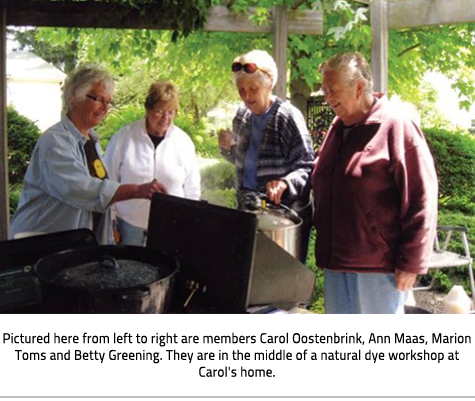The Evolution of Home Crafts
The changing roles of women are illustrated by changes in how and why women make home crafts.
When families settled in Lambton County in the 1800s, resources were scarce and help was limited. Early settlers had to scavenge and produce almost all their daily necessities from scratch, including clothing, quilts, and mittens. Extra articles could be sold to the local general store for cash. Some examples of the ingenuity and independence of early settlers includes door jambs made from wood, not iron; furniture like beds, chairs and cradles crafted from trees cleared to make farmland; and wheels made out of wood. Women played an important role in crafting clothing and bedding, many even spinning their own yarn from wool.
As the 1800s rolled into the 1900s, technology developed and access to factory-made goods increased. Many home crafting activities developed from necessities for survival into leisure activities. The crafts produced by women's hands today still have practical uses and aesthetic qualities similar to nineteenth century materials, but the incentive behind creating the crafts has become more for enjoyment and less a requirement for survival.
Sarnia Handweavers and Spinners Guild
The Sarnia Handweavers and Spinners Guild continue to create home crafts using traditional tools to express their creativity.
The Guild has approximately twenty members from across the County (including Grand Bend, Warwick, and Petrolia) who hold regular monthly meetings. Members do a variety of work beyond weaving and spinning, including beading, rug making, knitting and dyeing.
The Guild works together as a support network. At a meeting in December, 20 2, one member mentioned, “If a member is stuck on a particular part of a project, she can bring it to another member for advice and a fresh set of eyes.” The social aspect of the Guild is also important, as weaving takes up a lot of physical space and it is usually a solitary job. Guild meetings are a chance to socialize.
For members, weaving is a way of life.
When asked why they weave, Guild members commented:
- “Weaving is an expression of independence. You can create your own subsistence materials, the same as growing food on a farm.”
- “Weaving is a way to express creativity and the art is in the design.”
- “Weaving gives you something to do with your hands!”
- “Weaving and participation in the guild keeps your brain, hands and social life active.”




 Subscribe to this page
Subscribe to this page